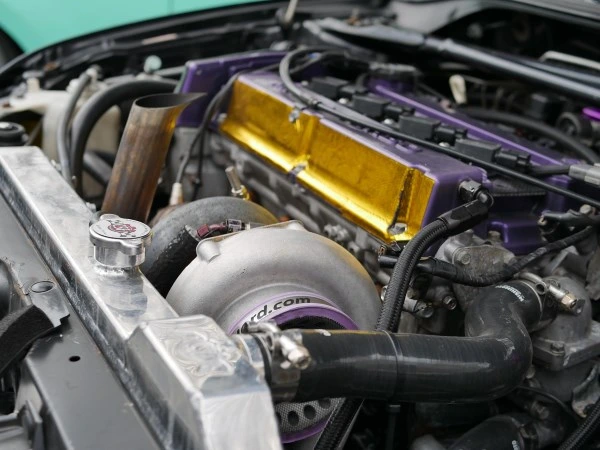Already during the construction of the vehicle, a decision is made about how many cylinders a particular engine will have – an appropriate engine compartment is also prepared for this element. The cylinder is responsible for the torque – necessary for the car to start from its place. Therefore, their mechanical efficiency, the right proportion of gasoline and air, as well as a spark with the right energy are the most important elements that ensure the engine works properly.

Causes of cylinder malfunction – why does it not work?
Before any repair takes place, an appropriate diagnosis is crucial. Possible repair should be preceded by a thorough inspection, because any interference with the engine is associated with large financial outlays. Therefore, it is worth first making sure that the project will cost less than a new engine or even a new car.
The cause of improper operation of the cylinder may be bridging of the candle electrodes – if the clearance between the middle and side electrodes is from 0.6 to 1 mm, in most motors this means the correct value. Make sure with the instructions – the size may be different, depending on the model of the engine and candles. In the event that the shot is too narrow or too wide in comparison with the forks given by the manufacturer, it should be corrected by bending or tightening the side electrode. However, if you find a bridge between two electrodes – you can remove it with a flat screwdriver or knife blade.
Proper operation of the cylinders also depends on the level of wear or damage to the pistons and piston rings. Damage to cylinder smoothness is usually caused by defects in these two components. One of the causes is the sealing or rupture of the piston rings. Problems with this part of the engine significantly hinder engine start-up and cause excessive oil consumption. Another reason may be the displacement of the piston pin due to damage to the protection, the piston rupture or the connecting rod breaking.
Symptoms of a non-working cylinder
If you’ve noticed a drop in engine power, exhaust gases coming out of the oil filler as a result of blowing exhaust gases into the crankcase, hear hissing in the crankcase, or notice the compression pressure in one or more cylinders that is too low than the nominal pressure in one or more cylinders – you may start to worry.
In order to determine the problem more accurately, it is worth measuring the compression pressure – you can do it yourself or at the mechanic’s. If you decide on the first option, it is enough to screw the pressure gauge into the spark plug hole of the cylinder under study. The data obtained in this way will allow to determine the condition of pistons and rings. In an older car, you can expect lower than the nominal compression pressures in the cylinders – the reason is worn piston rings and cylinder smoothness in the engine.
If only one of the cylinders has an understated result during the measurement, it is likely that the piston rings have cracked or baked. This is a damage with which it is worth going to the mechanic. In order to avoid overheating or seizure of the engine in the future, it is worth reaching for engine oil additives. Ceramizer helps to keep the engine last as long as possible, which is why it effectively protects the piston rings and cylinder smoothness against wear.
If the dimensions of the cylinders do not fall within the standards given in the instructions, their shunting is also carried out and oversized pistons are used. If, in turn, the compression pressure measurement is correct and the cylinders are within the permissible limits, the piston rings are replaced and the cylinders are honed. Leakage of the rings leads to a loss of power and efficiency of the engine, as well as excessive oil consumption. If the engine takes oil in surplus, it may not be thoroughly scraped from the cylinder walls and partially burned. This makes it easy to wear, crack or seal the piston rings in the piston grooves.
How to locate a non-working cylinder yourself?
Stock up on pliers with good insulation or rubber gloves that do not conduct electricity. Although some recommend that with the engine running, observe its rotation when removing the wire from the candle belonging to a non-working cylinder, this is fraught with the risk of leading to the failure of electronic systems.
Instead, after stopping the engine, wait a while for the head to cool. Then carefully examine the temperature of the candles with your fingers – the candle of the non-working cylinder will be cooler than the rest. Another way is to unscrew the candles and look at their electrodes – if they are dark and damp, it will be best to replace them with new ones.
Repair and prevention of cylinder damage
The simplest repair is to replace the bushings or grind the cylinders. Most often, electric surfacing with special electrodes is used for this purpose. It is worth remembering that any losses should not be supplemented with tin – it can cause harmful consequences, for example, obliterating the piston.
It is also worth bearing in mind that engine repairs are expensive – while replacing spark plugs costs about PLN 50, cylinder cuts will amount to about PLN 500 – not to mention replacing pistons, i.e. an expense of PLN 3,000. If you want to prevent damage, it would be a good idea to invest in Ceramizer engine oil additives. As engine oil spreads over all rubbing surfaces, the additives added to it can provide them with better protection. Do not think about how much it costs to repair the engine – start the process of its regeneration today.
